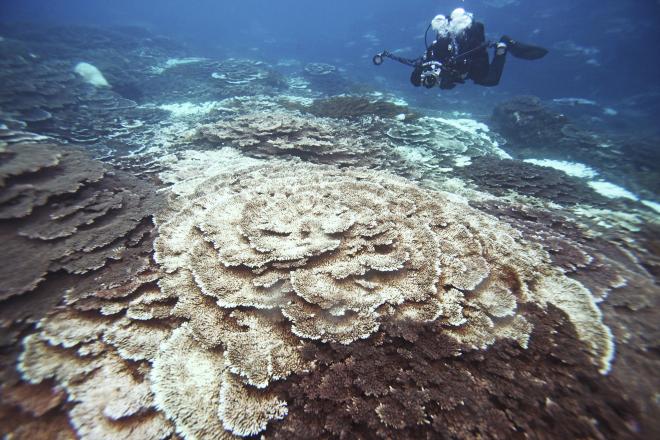Four takeaways from the IPCC’s report on climate adaptation and vulnerability
The assessment gets explicit about the effect of climate change on people, places, and ecosystems. Experts from Penn weigh in on what it means.
Credits: Michele W. Berger (Writer)

he United Nations’ Intergovernmental Panel on Climate Change (IPCC) has released the second report of its sixth assessment, known as AR6. The first, published in August, focused on the science of climate change. This one is about the effects of a changing climate on ecosystems and human systems, and a third, expected later in 2022, will focus on policy actions around climate mitigation and adaptation.
Michael Weisberg, chair of Penn’s Department of Philosophy, was an author on the just-published report. “We know there are big changes happening to climate systems, and it’s only going to get worse,” he says. “The 1.5°C goal that everyone is rallying around—it’s not like it’s safe, but that’s the best we can hope for now.”
The time for transformative action is now, says Melissa Brown Goodall, senior director of Penn’s Environmental Innovations Initiative. “The report is telling us that climate change is already impacting society. The important thing now is what we do with this information.”
Brown Goodall, Weisberg, and Mark Alan Hughes, founding faculty director of Penn’s Kleinman Center for Energy Policy, offer several takeaways from the assessment.
1. Climate change is affecting world regions differently, as well as damaging biodiversity and human settlements
“What this report tries to do is show, by area of the world and by sector, how different temperatures will affect different earth systems, human systems, and ecosystems,” Weisberg says. It reveals that upwards of 3.6 billion people live in places highly vulnerable to climate change, and that increasing temperatures and other effects have already altered marine, terrestrial, and fresh water ecosystems, leading to what could be the first known climate-driven species extinctions.
2. The report outlines two kinds of limitations to adapting to a changing climate
“Soft” limits are those the world can still address with sufficient resources and clear action. “Hard” limits, on the other hand, are those beyond the point of help. Several ecosystem types—including some warm water coral reefs, coastal wetlands, rainforests, and polar and mountain ecosystems—have already surpassed or are approaching hard adaptation limits, according to the assessment. If the world warms more than 1.5°C, the same will be true for some small island nations and for areas that depend on melt from glaciers and snowpack.
“The countries that have benefited from fossil fuel exploitation and have created the major drivers of climate change are the ones that are both geographically and economically, in general terms, less vulnerable to these hard limits,” Hughes says. “Put another way, people who have not caused the problem are living in places that are going to be more negatively impacted. The ethical aspect of all of this is absolutely central.”
3. The time frame to act is shrinking
All three experts agree that this window is now delineated in years, not decades. “It’s really about the next five to 10 years,” Hughes says. “We should do as much as we can as soon as we can.” That doesn’t simply mean working to reduce carbon emissions; Weisberg says efforts must also include coastal resilience, flood control, stabilization of food systems, and more. “The goal of sustainable development is for all people in the world to live long and live well, to thrive,” Weisberg says. “But adverse impacts from climate change are pulling us away from that.”
4. Actions must happen at global, federal, local, and individual levels
“It’s really hard to know if your personal choices can mean anything when dealing with such a huge and wicked problem,” Brown Goodall says. “Global assessments and reports like this are imperative, but they need to be undergirded by national, state, and local action.”
Brown Goodall suggests reframing the whole concept to prevent getting bogged down in the doom and gloom that a report such as this might provoke. “We’re at the precipice,” she says. “It’s important to know that we have such a short timeline and the consequences if we don’t act quickly. But to inspire action, I would assert there’s an imperative to focus on the solutions, on what we can do. We can’t do much about the damage already done, but we can think about the benefits of reducing emissions and how to change the narrative.”
Melissa Brown Goodall is senior director of the Environmental Innovations Initiative at the University of Pennsylvania.
Mark Alan Hughes is founding faculty director of the Kleinman Center for Energy Policy and a professor of practice in Penn’s Stuart Weitzman School of Design. He is also a faculty fellow of the Penn Institute for Urban Research, a senior fellow of the Wharton School’s Initiative for Global Environmental Leadership, a senior fellow of the Wharton Risk Management Center, and a distinguished scholar in residence at the Robert A. Fox Leadership Program.
Michael Weisberg is the Bess W. Heyman President’s Distinguished Professor and chair of the Philosophy Department in Penn’s School of Arts & Sciences. He is also a senior faculty fellow and director of post-graduate programs at Perry World House, co-director of the Penn Laboratory for Understanding Science, co-director of the Galápagos Education and Research Alliance, an advisor to U.N. Climate Change’s Nairobi Work Programme, and a contributing author to the IPCC 6th Assessment Report.